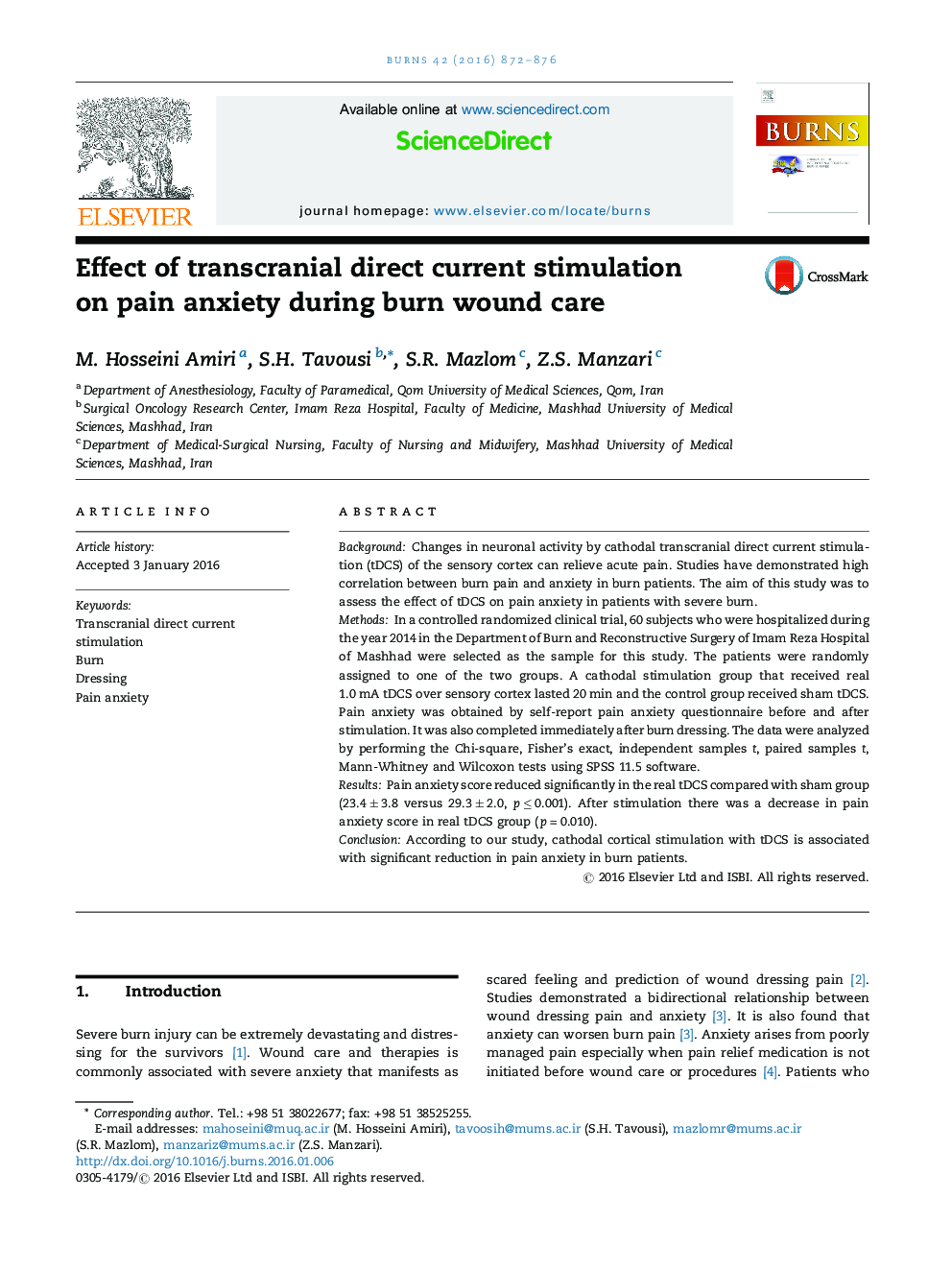| Article ID | Journal | Published Year | Pages | File Type |
|---|---|---|---|---|
| 3104097 | Burns | 2016 | 5 Pages |
•There is little evidence that interventions are effective in reducing the incidence of pain and anxiety during burn wound care in children.•Studies have demonstrated high correlation between burn pain and anxiety in burn patients.•The aim of this study was to assess the effect of tDCS on pain and anxiety during burn wound care.
BackgroundChanges in neuronal activity by cathodal transcranial direct current stimulation (tDCS) of the sensory cortex can relieve acute pain. Studies have demonstrated high correlation between burn pain and anxiety in burn patients. The aim of this study was to assess the effect of tDCS on pain anxiety in patients with severe burn.MethodsIn a controlled randomized clinical trial, 60 subjects who were hospitalized during the year 2014 in the Department of Burn and Reconstructive Surgery of Imam Reza Hospital of Mashhad were selected as the sample for this study. The patients were randomly assigned to one of the two groups. A cathodal stimulation group that received real 1.0 mA tDCS over sensory cortex lasted 20 min and the control group received sham tDCS. Pain anxiety was obtained by self-report pain anxiety questionnaire before and after stimulation. It was also completed immediately after burn dressing. The data were analyzed by performing the Chi-square, Fisher's exact, independent samples t, paired samples t, Mann-Whitney and Wilcoxon tests using SPSS 11.5 software.ResultsPain anxiety score reduced significantly in the real tDCS compared with sham group (23.4 ± 3.8 versus 29.3 ± 2.0, p ≤ 0.001). After stimulation there was a decrease in pain anxiety score in real tDCS group (p = 0.010).ConclusionAccording to our study, cathodal cortical stimulation with tDCS is associated with significant reduction in pain anxiety in burn patients.
